Birdfinding.info ⇒ The dark-rumped, eastern tropical Pacific form of Leach’s Storm-Petrel is locally common during its breeding season, from April to October, in the offshore waters of southern California and northern Baja California, when it can be found on pelagic trips out of Los Angeles and San Diego.
“Chapman’s Storm-Petrel”
Hydrobates leucorhoa chapmani
Breeds on islands of Baja California. Winters in the eastern tropical Pacific.
Nests on the Coronado and San Benito Islands offshore from Baja California, arriving around April and departing around October.
In 2014, “Chapman’s” was also confirmed nesting on an islet beside Santa Catalina Island, California (Carter et al. 2016). Reports of storm-petrels breeding elsewhere in the Channel Islands of California and on the Todos Santos Islands of Baja California (near Ensenada) likely refer to “Chapman’s”, at least in part.
Nonbreeding range is not well-known, but it has been recorded in offshore waters of southern Central America and northern South America, generally between the latitudes 15° North and 10° South.
Identification
A mid-sized, dark-brown storm-petrel with prominent blond carpal bars on the wing coverts, a variably dark rump, and a deeply forked tail. Differs from typical Leach’s principally in having a darker rump.
Can be extremely similar to several closely related dark-rumped storm-petrels: especially Ashy and Townsend’s, which regularly occur together with it. (See Notes below for detailed comparisons.)
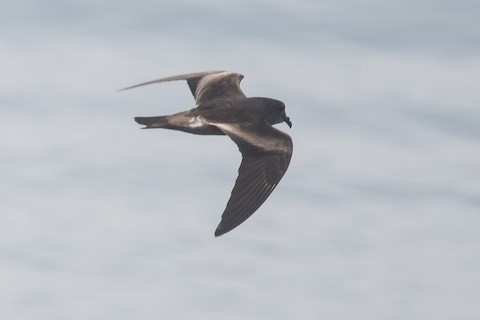
“Chapman’s Storm-Petrel”, H. l. chapmani, showing typical whitish sliver or “thumbprint” on the edge of the rump. (Offshore from San Diego, California; August 19, 2020.) © Nancy Christensen
Like typical Leach’s, “Chapman’s” is often best identified by its characteristically batlike flight pattern. It tends to hold its wings bent at the wrist and uses deep strokes that produce an irregular, bounding or bouncing flight.
The rump is typically pale-brown with a thin whitish sliver or “thumbprint” blotch at the outer edge. Some individuals have darker, essentially all-brown rumps, and some have paler rumps with a dark central strip and whitish oval patches on the sides.
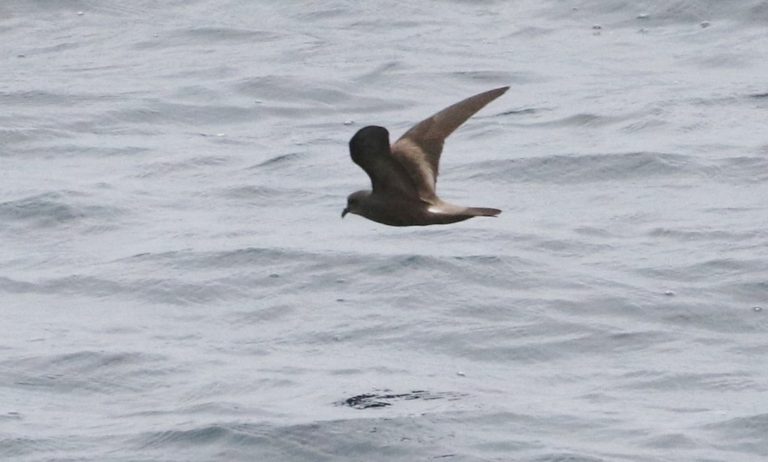
“Chapman’s Storm-Petrel”, H. l. chapmani, showing typical whitish sliver on the edge of the rump. (Offshore south of San Clemente Island, California; August 2018.) © J. Bailey
The palest-rumped “Chapman’s” can be indistinguishable from typical Leach’s—as their populations apparently blend together in California. (“Chapman’s” might be more appropriately classified as a localized color morph of Leach’s, rather than as a distinct form.)

“Chapman’s Storm-Petrel”, H. l. chapmani, near the pale-rumped end of the spectrum. (Thirty-Mile Bank, offshore from San Diego, California; July 24, 2021.) © Nicole Desnoyers
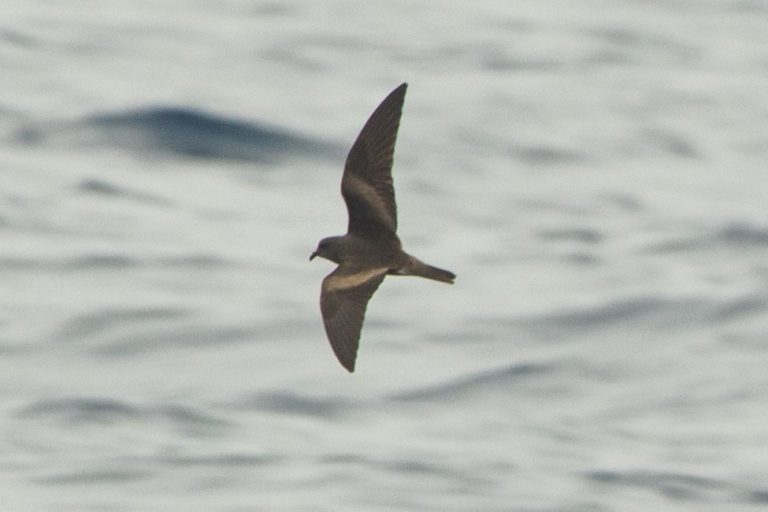
“Chapman’s Storm-Petrel”, H. l. chapmani, near the dark-rumped end of the spectrum. (Offshore from San Diego, California; August 2015.) © B.J. Stacey
Under optimal viewing conditions, when viewed from below, “Chapman’s” often shows a dark-gray hood, contrasting with its otherwise dark-brown body plumage.
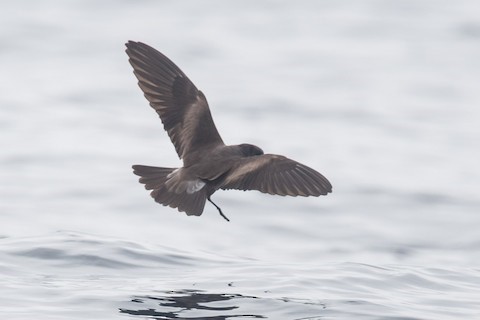
“Chapman’s Storm-Petrel”, H. l. chapmani, with tail fully fanned out, showing the distribution of whitish feathering on its rump. (Offshore from San Diego, California; August 2, 2020.) © Nancy Christensen
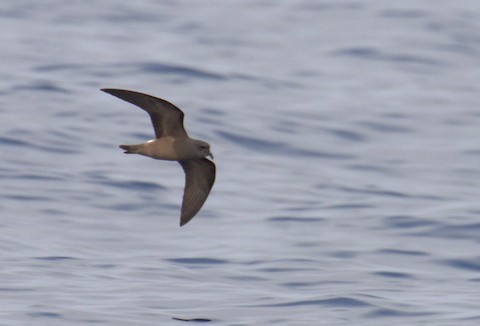
“Chapman’s Storm-Petrel”, H. l. chapmani, showing contrast between dark-gray hood and otherwise brown underparts. (Offshore from San Diego, California; July 11, 2021.) © Curtis Marantz
Voice. Vocalizations recorded on the breeding grounds appear to be identical to the chatter calls of typical Leach’s.
Notes
Monotypic form of Leach’s Storm-Petrel (leucorhoa), but its status as a distinct taxon is questionable due to apparent intergradation into adjacent Leach’s populations. “Chapman’s” might be more accurately understood as a localized color morph of Leach’s.
See below for comparisons of “Chapman’s Storm-Petrel” with Ashy and Townsend’s Storm-Petrels.
Cf. Ashy Storm-Petrel. Ashy and “Chapman’s” are mid-sized, mostly dark storm-petrels that can have nearly identical plumages. Their ranges overlap broadly in the waters of California and Baja California. “Chapman’s” is more variable than Ashy, especially in the color and pattern of the rump. Most “Chapman’s” show distinct whitish slivers or patches on the sides of the rump, and some have a more uniformly brown rump, whereas Ashy’s rump is uniformly grayish. The undersides of the wings also differ: “Chapman’s” is all-dark, whereas Ashy usually shows a distinct whitish strip on the underwing coverts.
Cf. Townsend’s Storm-Petrel. Townsend’s and “Chapman’s” are mid-sized, mostly dark storm-petrels that can have identical plumages. Their ranges overlap broadly from southern California south into the tropical eastern Pacific. Most Townsend’s have all-white rumps and therefore would not be confused with “Chapman’s”, but some Townsend’s have mostly dark rumps with patterns that are consistent with “Chapman’s”. In such cases, the only differences may be subtle details of size, shape, and flight pattern. Townsend’s is slightly smaller and stockier than “Chapman’s”, with a slightly shorter, less deeply forked tail, and steadier, less erratic flight. However, these differing tendencies and impressions are too slight to be useful under most field conditions—except possibly for optimal side-by-side comparisons.
More Images of “Chapman’s Storm-Petrel”
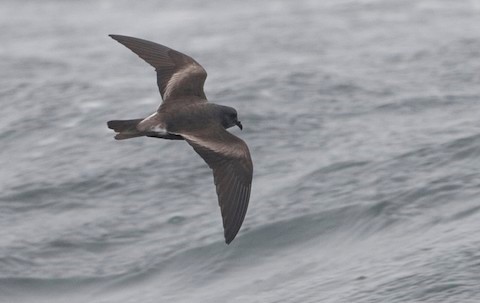
“Chapman’s Storm-Petrel”, H. l. chapmani. (Escarpment between Rodriguez and San Juan, offshore from Santa Barbara, California; July 25, 2009.) © Brian Sullivan

“Chapman’s Storm-Petrel”, H. l. chapmani. (Offshore from San Diego, California; August 2, 2020.) © Gary Nunn
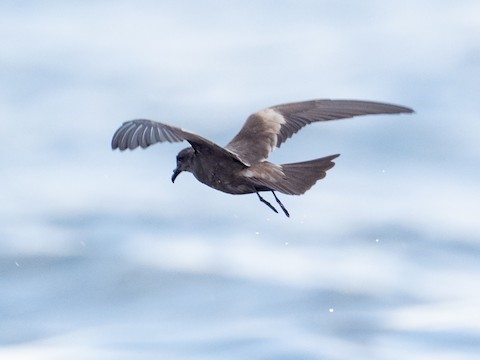
“Chapman’s Storm-Petrel”, H. l. chapmani. (Offshore from Punta Maia, Los Santos, Panama; December 22, 2019.) © Chris Fischer
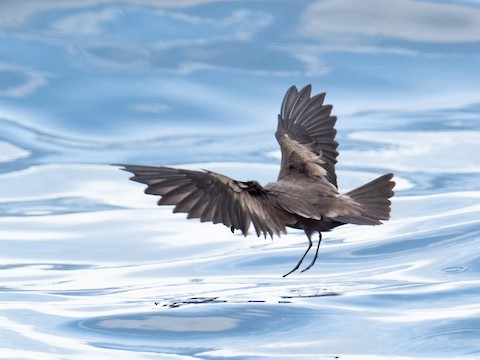
“Chapman’s Storm-Petrel”, H. l. chapmani. (Offshore from Punta Maia, Los Santos, Panama; December 22, 2019.) © Chris Fischer
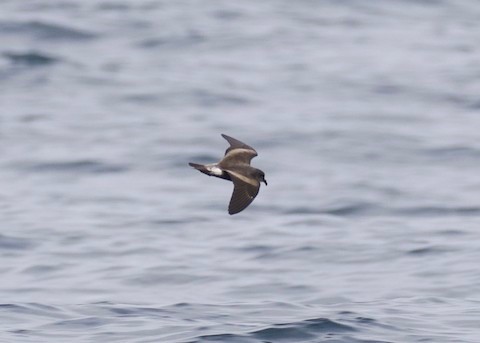
“Chapman’s Storm-Petrel”, H. l. chapmani, near the pale-rumped end of the spectrum. (Thirty-Mile Bank, offshore from San Diego, California; July 24, 2021.) © Nicole Desnoyers
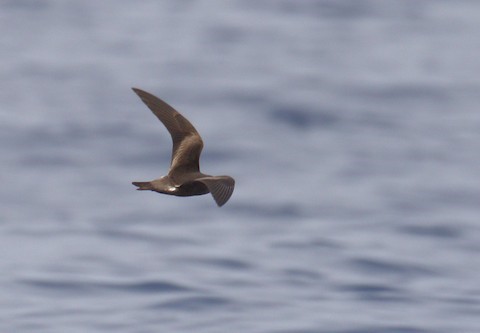
“Chapman’s Storm-Petrel”, H. l. chapmani. (Offshore from San Diego, California; July 11, 2021.) © Curtis Marantz
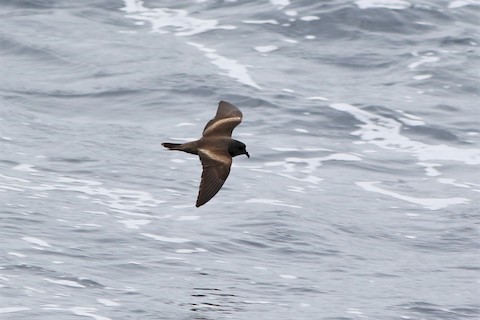
“Chapman’s Storm-Petrel”, H. l. chapmani, with an apparently all-dark rump. (Offshore from Punta Canoas, Baja California, Mexico; August 5, 2019.) © Robert McNab

“Chapman’s Storm-Petrel”, H. l. chapmani, with an apparently all-dark rump. (Offshore south of San Clemente Island, California; August 2018.) © J. Bailey

“Chapman’s Storm-Petrel”, H. l. chapmani, with mostly pale-brown rump and tail. (Offshore from Ensenada, Baja California, Mexico; September 22, 2018.) © Eric Antonio Martinez
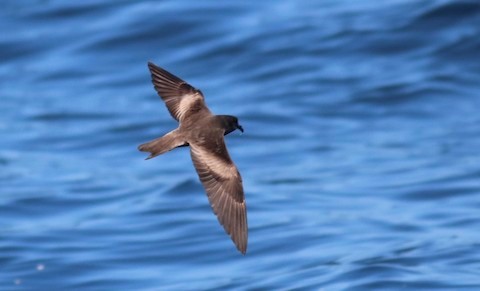
“Chapman’s Storm-Petrel”, H. l. chapmani. (Offshore from Ensenada, Baja California, Mexico; September 22, 2018.) © Eric Antonio Martinez

“Chapman’s Storm-Petrel”, H. l. chapmani, with an apparently all-dark rump, showing maximum spread of wings and tail. (Offshore from Punta Maia, Los Santos, Panama; December 22, 2019.) © Oliver Komar
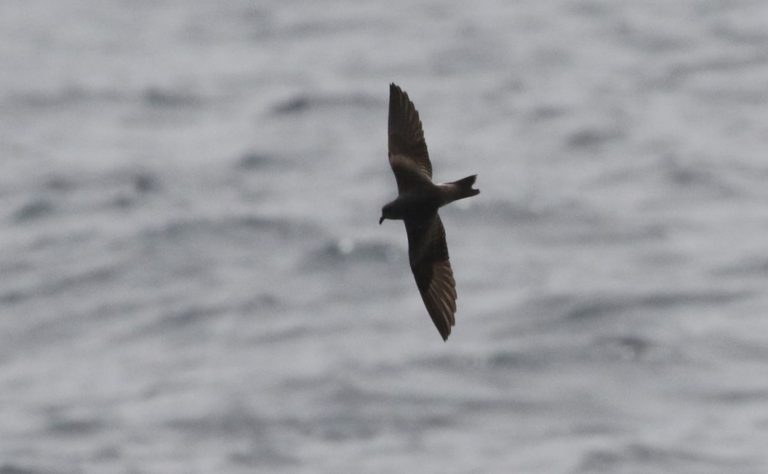
“Chapman’s Storm-Petrel”, H. l. chapmani. (Offshore south of San Clemente Island, California; August 2018.) © J. Bailey
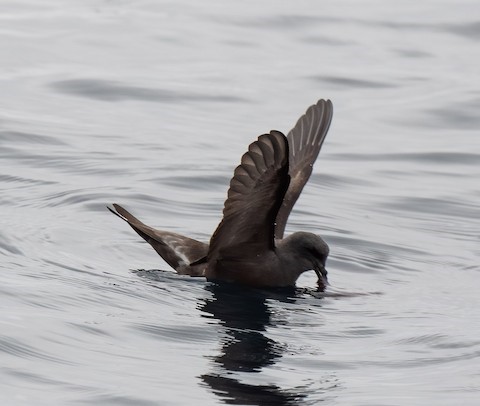
“Chapman’s Storm-Petrel”, H. l. chapmani. (Offshore from San Diego, California; August 2, 2020.) © Mel Senac

“Chapman’s Storm-Petrel”, H. l. chapmani. (Offshore southwest of San Clemente Island, California; August 29, 2020.) © Tom Benson
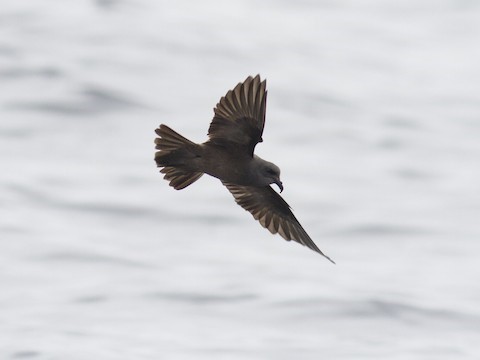
“Chapman’s Storm-Petrel”, H. l. chapmani, showing all-dark underparts and underwings. (Offshore from San Diego, California; August 2, 2020.) © Gary Nunn

“Chapman’s Storm-Petrel”, H. l. chapmani, showing all-dark underparts and underwings. (Offshore north of San Nicolas Island, California; July 15, 2018.) © David Pereksta
References
Ainley, D.G. 1980. Geographic variation in Leach’s Storm-Petrel. The Auk 97:837-853.
Alderfer, J., and J.L. Dunn. 2014. National Geographic Complete Birds of North America (Second Edition). National Geographic Society, Washington, D.C.
BirdLife International. 2018. Hydrobates leucorhous. The IUCN Red List of Threatened Species 2018: e.T132438298A132438484. https://dx.doi.org/10.2305/IUCN.UK.2018-2.RLTS.T132438298A132438484.en. (Accessed January 21, 2022.)
Carter, H.R., T.M. Dvorak, and D.L. Whitworth. 2016. Breeding of the Leach’s Storm-Petrel Oceanodroma leucorhoa at Santa Catalina Island, California. Marine Ornithology 44:83-92.
eBird. 2022. eBird: An online database of bird distribution and abundance. Cornell Lab of Ornithology, Ithaca, N.Y. http://www.ebird.org. (Accessed January 21, 2022.)
Harrison, P. 1983. Seabirds: An Identification Guide. Houghton Mifflin, Boston.
Howell, S.N.G. 2012. Petrels, Albatrosses & Storm-Petrels of North America. Princeton University Press.
Howell, S.N.G., and K. Zufelt. 2019. Oceanic Birds of the World. Princeton University Press.
Sibley, D.A. 2014. The Sibley Guide to Birds (Second Edition). Alfred A. Knopf. New York.
Xeno-Canto. 2022. Leach’s Storm-Petrel – Oceanodroma leucorhoa. https://xeno-canto.org/species/Oceanodroma-leucorhoa. (Accessed January 21, 2022.)
